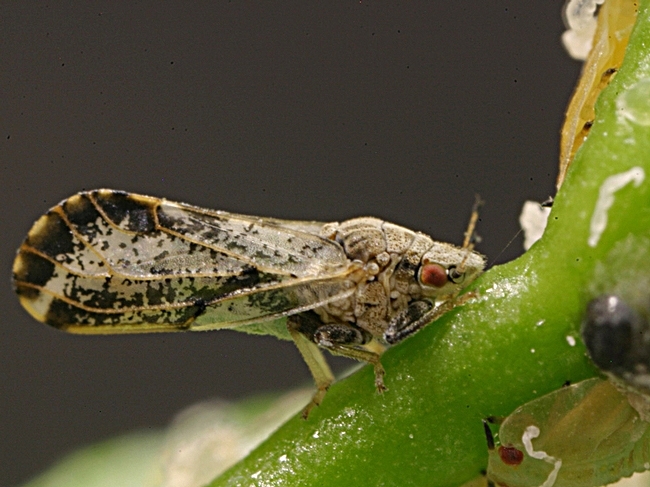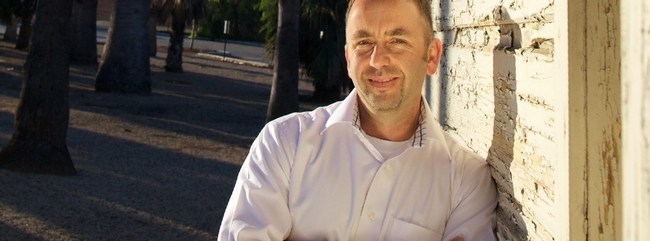- Author: Kathy Keatley Garvey
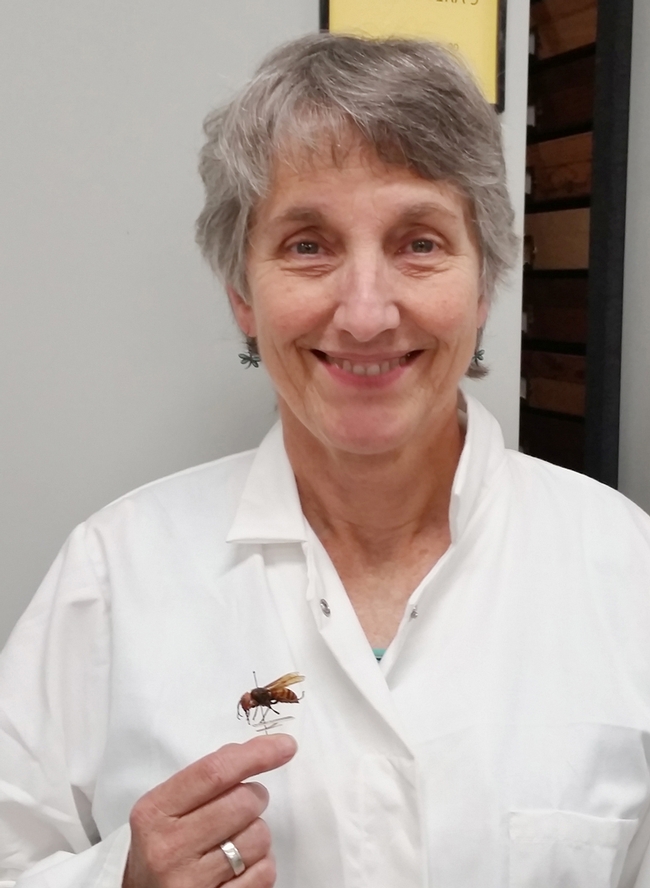
And well they should.
UC Davis wasp expert and researcher Lynn Kimsey, director of the Bohart Museum of Entomology and professor of entomology, UC Davis Department of Entomology and Nematology, called the name "ridiculous" and said "it's no more likely to sting and kill a human than a honey bee." (See Bug Squad blog)
Kimsey, a two-term past president of the International Society of Hymenopterists, told us yesterday that “Actually it's less likely, as honey bee venom packs quite a punch and it is exclusively designed to defend against vertebrates."
“The colony everyone is hyperventilating over was actually found on Vancouver Island, British Columbia, last September when it was destroyed and then a single, dead hornet was found in December in Blaine, Wash.,” Kimsey said. “There is no evidence that there are any more hornets in the vicinity of Vancouver or anywhere else on the West Coast.”
A colony of the Asian giant hornet (AGH), Vespa mandarinia, was found and destroyed Sept. 18, 2019 in Nanaimo, Vancouver Island, and the single dead hornet was found Dec. 8, 2019 in Blaine.
These were the first detections of this species in North America, and no, the so-called "murder hornets" are not out to get us. They're not out to kill you. They're not taking over the world. (Expect some upcoming horror movies, though!)
Twenty Asian giant hornet (AGH) specimens are housed in the Bohart Museum of Entomology, home of a global collection of nearly 8 million species. The largest AGH, a queen, measures about an inch and a half long, Kimsey said. She's never seen any larger than that.
Meanwhile, entomologists are bemoaning the name, "murder hornet" and the sensationalism and fear-mongering ensuing. Apparently the name originated with a Japanese researcher; out of the translation came "murder hornet."
“It's a bloody dumpster fire,” said entomology advocate, traveler and photographer Stephane De Greef, administrator of a newly created Facebook page, “Is This a Murder Hornet?”
“Some poorly-worded media reports about Asian giant hornets have triggered a veritable avalanche of nonsense online, but I can help set the record straight, wrote senior museum scientist and hymenopterist Douglas Yanega of UC Riverside Entomology Research Museum.
“One colony was found and exterminated in Nanaimo on Vancouver Island in September of 2019, with a few sightings associated,” Yanega wrote. “One wasp believed to be from that colony was found--dead--on the U.S. side of the border near Nanaimo in December. Right now, all the authorities are doing is asking people to keep their eyes peeled JUST IN CASE there were queens that escaped the destruction of the Nanaimo nest, and established their own nests nearby. I was one of the authorities brought in to consult on this case, and to my knowledge there have not been any sightings in 2020 that would suggest the eradication attempt was unsuccessful. Put bluntly, as far as we know, there are no Asian giant hornets alive in either the U.S. or Canada as of 2020, and if there are, then they would be in the immediate vicinity of Vancouver Island (about a 50 mile radius or so).”
Want to know more about them? Read the fact sheet published by Washington State University Extension. It's the work of the husband-wife team of Susan Cobey, bee breeder-geneticist and Timothy Lawrence, county director of Island County Extension (both formerly of UC Davis), and also Mike Jensen, county director of Pend Oreille. (See https://bit.ly/2SA3TxS)
“It is critical that we identify, trap, and attempt to eliminate this new pest before it becomes established and widespread,” they wrote. “Attempts to contain the spread and eradication of this invasive insect will be most effective in trapping queens during early spring before their nests become established. Finding the nests can be a bit of a challenge. Their nests are typically in the ground though they can also be found under overhangs and within wall voids. The AGH is a strong flier and often will fly up and away and have an extensive flight range. Thus tracking can be difficult.”
They advise residents to “proceed with extreme caution and contact WSDA immediately. Do not try to exterminate the nest yourself.”
The sensationalism on the media is a concern, said Lawrence, "but...we need to find out just how extensive this infestation is."
Facebook users are posting images of so-called Asian giant hornets that are actually such species as cicada killers, European hornets, southern yellow jacket queens, sawflies, hoverflies, a beetle, and even a moth.
“Yes, it is possible this species could establish,” wrote Sloan Tomlinson, a parasitoid wasp specialist and educator. “Has it yet? No. Until concrete evidence is presented about any further establishment by this species, it's simply conjecture. Additionally, even IF this species is established, their infamy is overhyped and sensationalized. In Japan they do indeed kill around 30 people a year. Around 40 people are killed annually in the US by domestic dogs.”
Doctoral candidate and researcher Ellie Field of Iowa State University wrote on Facebook that “the murder hornet articles are making the rounds quickly and they seem to be doing more harm than good. Yes, it is awesome to track insect populations (particularly staying watchful for non-native and potentially invasive species). But no, the Asian giant hornet (Vespa mandarinia) is not going to destroy America. The one nest and individual that was found around Vancouver last year was destroyed, and this doesn't indicate any establishment. Introduction events happen all the time, all across the world! That region should continue to keep a watchful eye, but for everyone else this is not going to be relevant. There is no invasion, just a small possibility that some may have overwintered in that area.”
Those unsure about insect identification can email an image to Lynn Kimsey at lskimsey@ucdavis.edu or contact the Entomological Society of America at https://www.entsoc.org/ or https://bit.ly/2W2jRmi.
Entomologists also identify insects on such Facebook pages as “Insect Identification,” “Entomology,” and “Spider and Insect Enthusiast.”
Meanwhile, they're trying to douse the "bloody dumpster fires."
(Update: UC Davis distinguished professor Walter Leal, who studied and worked in Japan, asked a Japanese friend today about the origin of "murder hornet": The Asian giant hornet, Vespa mandarinia, is called “Kiiro Suzume Bachi (キイロスズメバチ)” in Japanese. It injects its venoms, sometimes inducing severe anaphylaxis. The article in BBC introduced Asian giant hornet, Vespa mandarinia as “murder hornet” is at https://www.bbc.com/news/52533
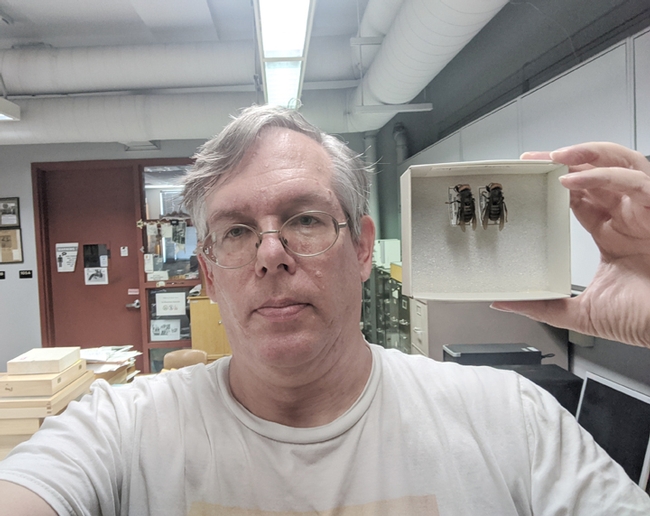
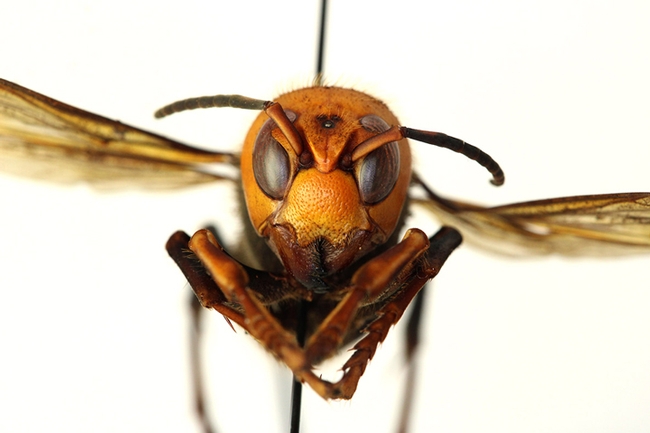
- Author: Kathy Keatley Garvey
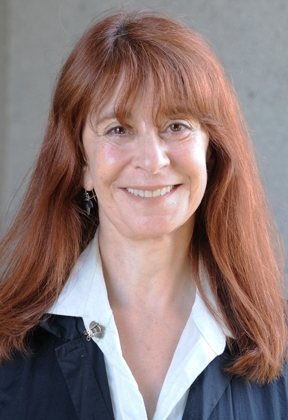
That includes pollinator habitat.
In their paper, “Techno-Ecological Synergies of Solar Energy for Global Sustainability,” published today (July 9), the researchers propose a “techno–ecological synergy (TES), a framework for engineering mutually beneficial relationships between technological and ecological systems, as an approach to augment the sustainability of solar energy across a diverse suite of recipient environments, including land, food, water, and built-up systems.”
They provided “a conceptual model and framework to describe 16 TES of solar energy and characterize 20 potential techno–ecological synergistic outcomes of their use.”
The paper offers what is considered the most complete list yet of the advantages of solar energy. "The study also marks the launch of a partnership between the Center for Biological Diversity and UC Davis to advance a Wild Energy future, which emphasizes the potential of solar energy systems to benefit not only humans, but the entire planet," according to a UC Davis news release.
Despite solar energy's growing penetration in the global marketplace, “rarely discussed is an expansion of solar energy engineering principles beyond process and enterprise to account for both economic and ecological systems, including ecosystem goods and services,” wrote lead author Rebecca Hernandez of the UC Davis Department of Land, Air and Water Resources and the Wild Energy Initiative of the John Muir Institute of the Environment, UC Davis. She considers the first step in creating a wild-energy future is "understanding the true value of solar."
The researchers defined TES “as a systems-based approach to sustainable development emphasizing synergistic outcomes across technological and ecological boundaries…solar energy combined with TES may prove a promising solution for avoiding unintended consequences of a rapid renewable energy transition on nature by mitigating global change-type problems.”
Co-author and entomologist Leslie Saul-Gershenz, associate director of research for the Wild Energy Initiative, John Muir Institute of the Environment, said it is imperative to protect our ecological system, which includes pollinators and their required resources. Among them: nest sites, and pollen and nectar resources.
“Native pollinators face global pressure from many sources of habitat alteration, pesticide use, invasive non-native plants, and climate change,” said Saul-Gershenz, who received her doctorate in entomology from UC Davis. “We are proposing land sparing priorities in undisturbed ecosystems, such as arid lands in the Mojave and Sonoran deserts, which sustain some of the highest native pollinator species diversity in the United States. We add the valuation of these pollinators as essential resources into the calculation when selecting sites to deliver renewable energy goals to achieve true tech-ecological synergy and global sustainability.”
Solar cells, called photovoltaic (PV) solar energy, convert sunlight directly into electricity. For example, in Minnesota and Vermont, land adjacent to croplands is developed with PV solar energy, the authors noted. The low-growing flowering plants for native and managed pollinators help increase agricultural yields, reduce management (that is, mowing) costs, and confer the opportunity to produce honey and other honey-based commodities.
The researchers concluded that “achieving a rapid transition from fossil fuels to renewable energy sources on planet Earth to support human activities, in a manner benign to Earth's life support systems, is arguably the grandest challenge facing civilization today. The consequences of climate and other types of global environmental change are a cautionary flag against the extrapolation of past energy decisions.”
Hernandez initiated the research and led the conceptual design and writing of the manuscript All authors contributed to further content development and drafting of the manuscript. The team also included researchers from UC Berkeley, UC Riverside and UC San Diego, as well as scientists from Lancaster University in the United Kingdom; U.S. Fish and Wildlife Services, Sacramento; Center for Biological Services, Tucson, Ariz.; Université de Thiès, Senegal; Centers for Pollinators in Energy, Fresh Energy, St. Paul, Minn.; National Renewable Energy Laboratory, Golden, Co.; and Renewable Energy and Environmental Finance Group, Wells Fargo, San Francisco.
Look for more research on solar energy!
"Solar energy is the fastest-growing source of power worldwide," according to the UC Davis news release. "In 2019, solar is expected to provide more than 30 percent of all new U.S. electric capacity. According to the International Energy Agency, solar energy could become the largest electricity source by 2050. Solar has many advantages beyond providing power, particularly when built to maximize social, technological and environmental benefits."
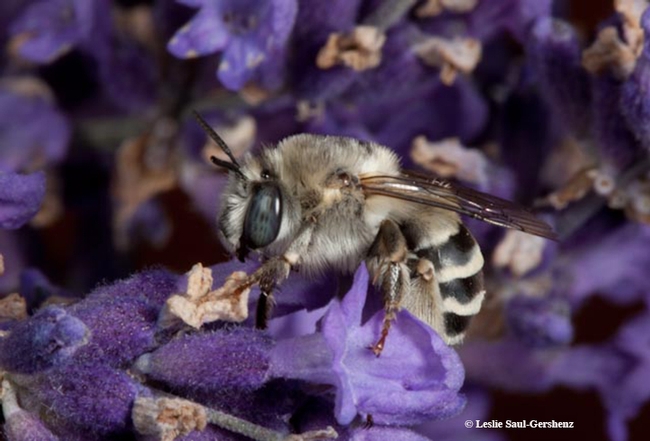
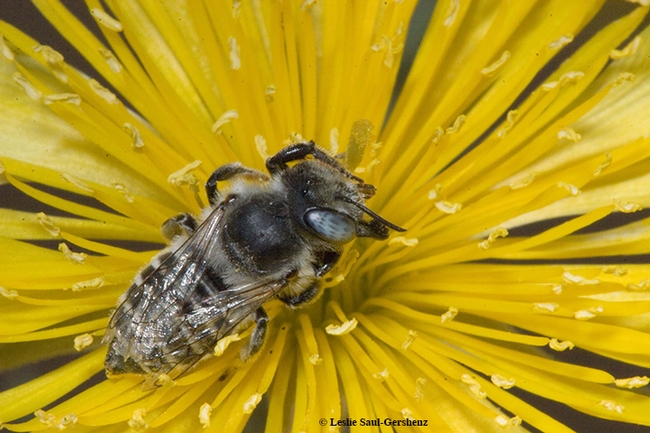
- Author: Kathy Keatley Garvey
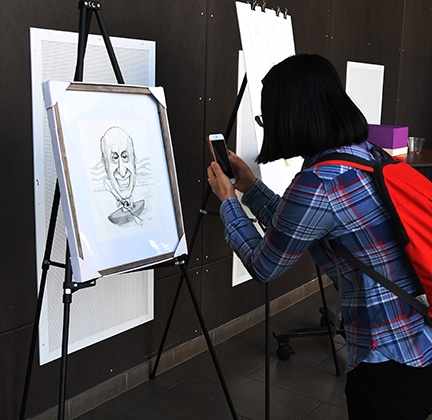
The distinguished professor, known for his expertise in chemistry, toxicology, biochemistry and entomology, meshes all four sciences in his 50-year research on acute and neuropathic pain in humans and companion animals. It all began with his basic research on how caterpillars become butterflies, research that led to key discoveries about chronic pain.
But back to the reunion.
illed as “Biochemistry and Society: Celebrating the Career of Professor Bruce Hammock,” the three-day event drew Hammock lab alumni from throughout the United States, as well as Egypt, Spain, China, Australia, New Zealand, Germany, Sweden, Canada and the Czech Republic.
“It was really special and I will treasure that weekend always,” said Hammock, who trained scientists at UC Riverside for five years before joining the UC Davis faculty in 1980. He currently holds a joint appointment with the UC Davis Department of Entomology and Nematology and the UC Davis Comprehensive Cancer Center. He has directed the UC Davis Superfund Program, funded by the National Institutes of Health's National Institute of Environmental Health (NIH/NIEHS), for 31 years.
Hammock's colleagues, and former postdoctoral fellows, graduate and undergraduate students and visiting scholars arrived at the lab reunion with their spouses--as well as their scientific posters for display and discussion. The posters covered everything from ground-breaking research in prestigious journals to a humorous look at his annual water balloon battles in front of Briggs Hall.
The scientists dined at the UC Davis Conference Center, the Buehler Alumni Center and the Stonegate Country Club; shared months, years and decades of memories; and toasted, roasted and gifted their mentor. Hammock, in turn, toasted, roasted and gifted them.
“We had a blast,” recalled organizer Shirley Gee, a former research toxicologist and manager of the Hammock lab for 31 years. She retired in June 2016 after 40 years of service with the university.
“I have had a vision of this event to honor Bruce for many years now, and it was such a thrill to see it come together,” she said. “Reconnecting in person with all the alumni and their families was more rewarding than I could have imagined, but even more importantly was the thrill of watching alumni reconnect with each other! There were a lot of tears in the house. Many people I think were surprised by how the years melted away when they began reacquainting. I think that speaks to the environment that Bruce created that led to many strong personal and professional bonds.”
Gee credited her seven-member committee—former Hammock students Keith Wing, Jim Ottea, Tom Sparks, Babak Borhan, Qing Li; postdoctoral fellow and “academic grandson” Kin Sing Stephen Lee, a former student of Babak Borhan; and colleague Sarjeet Gill, now a distinguished professor at UC Riverside, with greatly contributing to the success of the one-of-a-kind celebration.
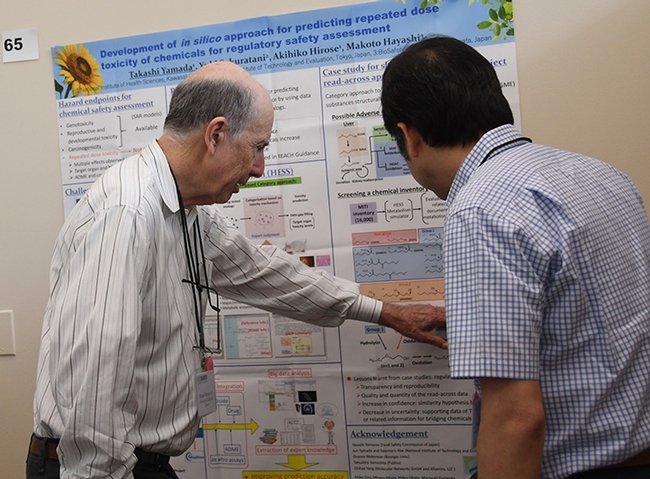
Hammock has studied the enzyme system and its inhibitors ever since. His lab has generated more than 80 patents, 300 postdoctoral fellows, and more than 65 graduates, who now hold positions of distinction in academia, industry and government. He recently formed a Davis-based company, EicOsis, to develop an orally active non-addictive drug for inflammatory and neuropathic pain for human beings and companion animals. Human clinical trials are scheduled to begin in 2019. Several seed-fund grants and a NIH/NINDS (National Institute of Neurological Disorders and Stroke) Blueprint Development Grant support EicOsis.
Hammock, described at the lab reunion as a “genius,” collaborates with scientists worldwide in what's been described as “unprecedented research with a multidisciplinary, integrated approach to research focused on insect biology, mammalian enzymology, and analytical chemistry.” He has authored more than 1000 publications on a wide range of topics in entomology, biochemistry, analytical and environmental chemistry in high quality journals, and has been cited more than 54,000 times. In the epoxide hydrolase field, the Hammock laboratory has published almost 900 peer-reviewed papers.
Tom Sparks, who was Hammock's first graduate student at UC Riverside, chronicled Hammock's career and recalled humorous anecdotes from his early professorship at UC Riverside. A former professor at Louisiana State University, and now a research fellow in Discovery Research at Dow AgroSciences (now Corteva Agriscience, Indianapolis, Sparks praised Hammock's intellect and curiosity. “For Bruce, it was all about the journey, looking around and operative at the interface between entomology, biochemistry and chemistry.”
Gill, along with University of Utah emeritus professor Glenn Prestwich and UC Davis research scientist Karen Wagner also delivered presentations, fondly recalling their shared time and science with Hammock.
Keith Wing, who was Hammock's second graduate student at UC Riverside/Davis, served as emcee at the lab reunion. A former senior research associate at DuPont and Rohm and Haas and current consultant, Wing said “Bruce has inspired many hundreds of developing scientists. For myself and many others, he was able to see what we could become as scientists and social contributors before we could see it ourselves."
Others commented that they learned this from Hammock: “We explore the unexpected and get to do things that don't work” and “Design things to fail; when they don't fail follow along.”
Hammock, the crowd agreed, seems to follow baseball legend Yogi Berra's sage advice: “If you come to a fork in the road, take it.”
Gill praised Hammock's “impact on human health, environmental health” as well as his love of the outdoors—from kayaking to mountain climbing.
Numerous alumni lauded Hammock's sense of humor. One scientist quoted Albert Einstein as saying “Creativity is intelligence having fun” and added “Bruce is always having fun.”
Among the other comments:
- “I never heard him speak a cross word.”
- "He treats everyone with respect.”
- "Bruce loves science and he loves people.”
- "He never heard a crazy idea.”
- "What Bruce does—he delivers the future.”
- "Bruce has a lot of determination and can approach difficult problems from multiple angles.”
- "Bruce values strong relationships with friends he has made over the years”
A native of Little Rock, Ark., Hammock received his bachelor of science degree, magna cum laude, in 1969 from Louisiana State University, Baton Rouge, where he majored in entomology and minored in zoology and chemistry. Then it was off to UC Berkeley, for his doctorate in entomology/toxicology in 1973, and postdoctoral fellowship.
It was at UC Berkeley where he met and married his wife, Lassie, who had just entered the doctoral program in plant physiology. They married in 1972 and then “the Army called me up,” Hammock remembers.
Hammock served as a public health medical officer/first lieutenant with the U.S. Army Academy of Health Science in San Antonio, Texas; and then did more postdoctoral research at the Rockefeller Foundation, Department of Biology, Northwestern University, Evanston. Ill.
Hammock then joined the faculty of the Division of Toxicology and Physiology, UC Riverside Department of Entomology in 1975 before heading for UC Davis in 1980 to accept a joint-faculty appointment in toxicology and entomology.
Bruce and Lassie reared three children: Tom, Bruce and Frances. “Frances and her husband, Adrian, teach math at UC San Diego; Bruce is on the UC Davis School of Veterinary Medicine faculty; and Tom, a graduate of the American Film Institute Conservatory, makes movies,” Hammock said, adding that he and Lassie appeared in one of the movies that Tom directed: "The Last Survivors."
Highly honored by his peers, Hammock is a fellow of the National Academy of Inventors, which honors academic invention and encourages translations of inventions to benefit society. He is a member of the U.S. National Academy of Sciences, a fellow of the Entomological Society of America, and the recipient of scores of awards, including the Bernard B. Brodie Award in Drug Metabolism, sponsored by the America Society for Pharmacology and Experimental Therapeutics; and the first McGiff Memorial Awardee in Lipid Biochemistry.
Hammock told the crowd at the reunion that he began his career studying insect science but switched to human research after encountering “all the suffering involved in acute and neuropathic pain.”
His insect science research centered around how a key enzyme, epoxide hydrolase, degrades a caterpillar's juvenile hormone, leading to metamorphosis from the larval stage to the adult insect. He then wondered "Does the enzyme occur in plants? Does it occur in mammals?" It does, and particularly as a soluble epoxide hydrolase in mammals.
“It is always important to realize that the most significant translational science we do in the university is fundamental science,” said Hammock. “The extreme and poorly treated pain that I observed as a medical officer in a burn clinic in the Army, is a major driver for me to translate this knowledge to help patients with severe pain.”
And it all began with him asking how caterpillars turn into butterflies.
"Science is full of surprises," the distinguished UC Davis professor said. "We need to remember that the concept, the clinical target, and even the chemical structure came from asking how caterpillars turn into butterflies."
(See photos on the UC Davis Department of Entomology and Nematology news blog.)
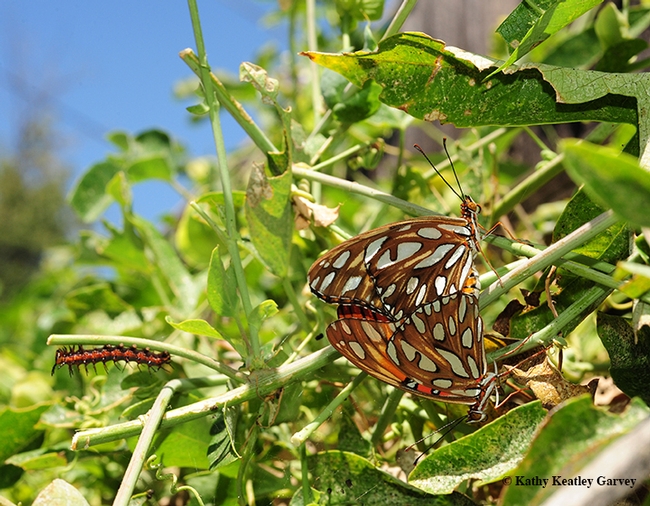
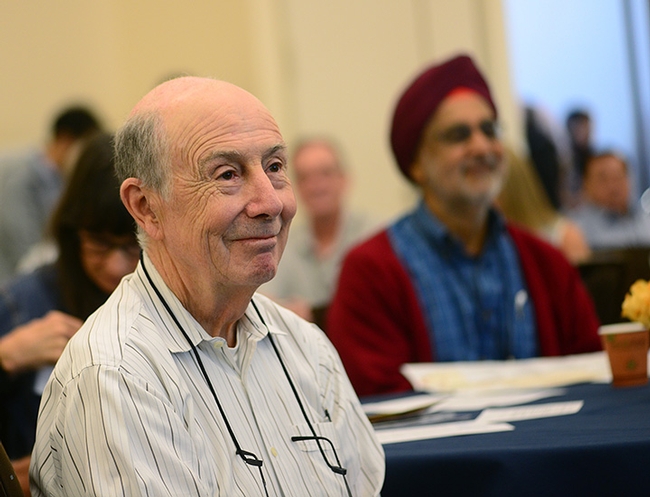
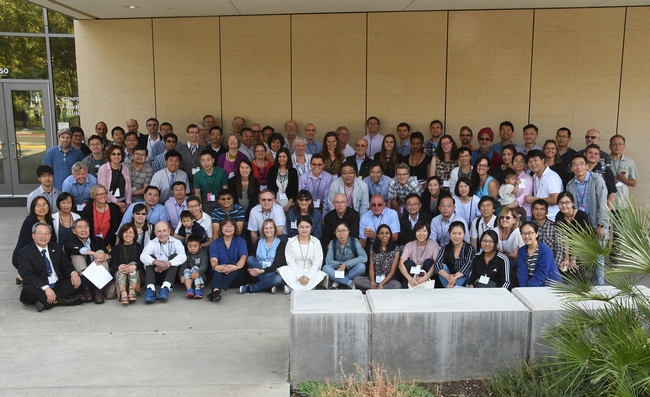
- Author: Kathy Keatley Garvey
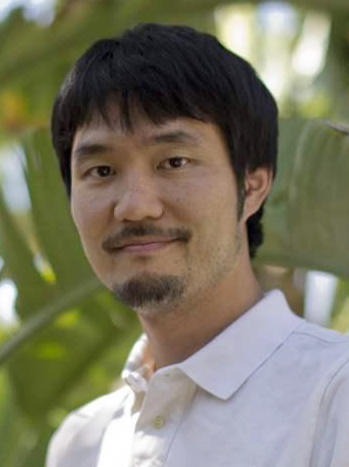
Naoki Yamanaka, an assistant professor at UC Riverside (UCR), is known for his innovative and creative research. In fact, the National Institute of Health (NIH) just awarded him a $2.4 million grant in its High-Risk, High-Reward Research Program to study the role of steroid hormone transporters in insect development and reproduction. A UCR news release pointed out that he will "translate that knowledge into new ways to combat the spread of mosquitoes, which are among the deadliest animals on the plant."
Fast forward to today--actually next week! And this time, it's about fruit flies. Steroid hormone transporters in fruit flies.
Yamanaka will discuss "A Membrane Transporter Is Required for Steroid Hormone Intake in Drosophila" at the UC Davis Department of Entomology and Nematology seminar, set from 4:10 to 5 p.m., Wednesday, Oct. 24, in 122 Briggs Hall. Host is seminar coordinator and medical entomologist Geoffrey Attardo, assistant professor of entomology.
"Steroid hormones are a group of lipophilic hormones that are believed to enter cells by simple diffusion to regulate diverse physiological processes through intracellular nuclear receptors," Yamanaka explains. "We recently challenged this model in the fruit fly Drosophila melanogaster by demonstrating that a membrane transporter that we named Ecdysone importer (Ecl) is involved in cellular uptake of the steroid hormone ecdysone.Eci encodes an organic anion transporting polypeptide of the evolutionary conserved solute carrier organic anion superfamily. Results of our study may have wide implications for basic and medical aspects of steroid hormone research."
Yamanaka, who received his doctorate in biological sciences in 2007 from the University of Tokyo, says that his lab is "focused on identifying and characterizing neuroendocrine signaling pathways that regulate physiological and behavioral changes during insect development. Similar to humans, where physical and mental development during juvenile stage (puberty) is controlled by the neuroendocrine system, insects also have a sophisticated hormone signaling network that regulates their developmental transitions. Mainly by using fruit fly molecular genetic tools, we would like to understand what kind of hormones and receptors are involved in this system, how they work at the molecular level, and how such knowledge can be applied to develop new approaches to control animal development."
This is exciting research.
What exactly are "steroid hormones?" As author Sarah Nightingale explained in the UCR news release:
"Steroid hormones mediate many biological processes, including growth and development in insects, and sexual maturation, immunity and cancer progression in humans. After they are produced by glands of the endocrine system, steroid hormones must enter cells to exert their biological effects. For decades, the assumption has been that these hormones enter cells by simple diffusion, but preliminary work in Yamanaka's lab suggests a defined passageway controlled by proteins called membrane transporters."
Said Yamanaka: "The overall goal of this project is to challenge the conventional paradigm in endocrinology that steroid hormones freely travel across cell membranes by simple diffusion. We will also screen chemicals that inhibit steroid hormone entry into cells, with the goal of developing new pest control reagents.”
The NIH High-Risk, High-Reward Research Program is quite competitive. This year NIH officials granted only 89 awards and they were to “extraordinarily creative scientists proposing highly innovative research to address major challenges in biomedical research.”
Yamanaka's research may lead to important pest control strategies for mosquitoes that transmit deadly diseases. As Nightingale explained: "Using the simple but powerful fruit fly model, his team will study how the insect steroid hormone ecdysone is transported in (and potentially out) of cells with the help of membrane transporters. Since ecdysone controls metamorphosis and molting as an insect moves from one stage of its life cycle to the next, blocking its transport could offer a new way to inhibit insect growth and development. The team will then study the same transport pathway in the mosquito that causes yellow fever, hoping to identify chemicals that inhibit steroid hormone transport as a pest control strategy. Worldwide, mosquito-borne diseases cause millions of deaths each year, with malaria alone causing more than 400,000 deaths, according to the World Health Organization."
Bottom line: “By targeting the membrane transporter from outside the cells, we may be able to circumvent common pesticide resistance machinery provided by proteins within the cells, such as detoxification enzymes and drug efflux pumps,” Yamanaka pointed out in the news release.
His seminar at UC Davis is the fifth in a series of fall seminars coordinated by Attardo. (Note: The Yamanaka seminar will not be recorded.)
Upcoming seminars include:
4:10 p.m., Wednesday, Oct. 31
Fred Wolf, assistant professor, UC Merced: (tentative title) "Drunken Drosophila and the Coding of Brain Plasticity"
Host: Joanna Chiu, associate professor and vice chair, UC Davis Department of Entomology and Nematology
4:10 p.m., Wednesday, Nov. 7
Lark Coffey, assistant professor in the Department of Pathology, Microbiology and Immunology, UC Davis School of Veterinary Medicine: "Zika Virus in Macaques, Mice and Mosquitoes: Contrasting Virulence and Transmissibility in Disparate Hosts"
Host: Geoffrey Attardo
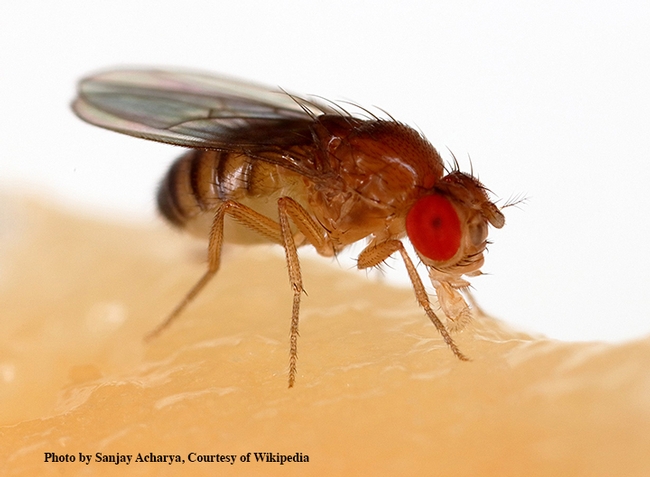
- Author: Kathy Keatley Garvey
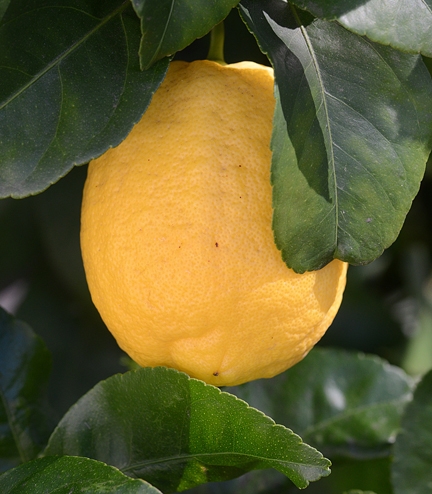
But Mark Hoddle, Extension entomologist and director of the Center for Invasive Species Research at the University of California, Riverside, is.
The Asian citrus psyllid or ACP, a mottled brown insect about the size of an aphid, has emerged as the most important exotic insect pest of citrus in California, and he, along with many others, is targeting it.
Hoddle will speak on “Protecting California Agriculture from Invasive Pests: Biocontrol of Asian Citrus Psyllid in Urban Southern California" when he presents the UC Davis Department of Entomology and Nematology's first seminar of the fall quarter on Wednesday, Sept. 26.
His lecture is from 4:10 to 5 p.m., Wednesday, Sept. 26 in 122 Briggs Hall, announced seminar coordinator Geoffrey Attardo, assistant professor and medical entomologist, UC Davis Department of Entomology and Nematology.
ACP or Diaphorina citri feeds on phloem juice in new leaf growth, deforming the leaves, but more importantly, Hoddle and fellow researchers point out, it vectors the bacterium (Candidatus Liberibacter asiaticus) that causes "the lethal and untreatable citrus disease," huanglongbing (HLB), also called citrus greening disease.
Now researchers are applying an alternative approach, a classical biological control program using two parasitoids from Parkistan. They attack the psyllid nymphs.
As its name implies, the Asian citrus psyllid originated in Asia. It has now spread throughout much of the world, including parts of the Middle East, South and Central America, Mexico and the Caribbean. It was first detected in Florida (Palm Beach County) in 1998, and is now found in Louisiana, Georgia, Arizona, South Carolina, Texas and California. It was first detected in California (San Diego County) in August of 2008. It is a major threat to the multibillion dollar citrus industry in the United States.
The UC Statewide Integrated Pest Management Program has published a Pest Note about the disease and tells how to inspect your citrus trees:
"Homeowners and landscapers can help combat the psyllid by inspecting their citrus trees and reporting new infestations of the Asian citrus psyllid or suspected cases of the disease. The best way to detect the psyllid is by looking at tiny new leaves (feather flush growth) on citrus trees whenever new leaves are forming on the tree. Mature citrus trees typically produce most of their new growth in the spring and fall, but young trees and lemons tend to produce flushes of new growth periodically during warm weather."
"Slowly walk around each tree and inspect the flush growth. Look for signs of psyllid feeding and damage, including twisted leaves, waxy deposits, honeydew, sooty mold, and adult psyllids."
"If you think psyllids are present, use a hand lens to look for small yellow eggs, psyllid nymphs with their waxy tubules, and adults. Immature stages (eggs and nymphs) are limited to tender new leaves and they don't fly, so monitoring efforts are most effective when directed toward these stages on feather flush."
"If you think you have found the insect, immediately contact the CDFA Exotic Pest Hotline at 1-800-491-1899. CDFA staff will tell you if you are in an area that is new to the psyllid or if it is common in your area."
Hoddle, an Extension specialist, received his bachelor's degree (1988) and master's degree (1991) in zoology from the University of Auckland, New Zealand. He holds a doctorate in entomology (1996) from the University of Massachusetts, Amherst.
Since 1997, Hoddle has focused his research on biological control as a tool to reduce the impact of invasive pest species to agriculture, urban and natural areas, with a primary focus on issues affecting California. These programs, he says, often require long periods of overseas research in the home range of the target pest and searching for and studying natural enemies for possible use in biological control.
Hoddle received the Entomological Society of America's "Recognition Award in Entomology" in 2007, after earlier winning the the Pacific Branch of ESA award.
Attardo says that all seminars will take place on Wednesdays at 4:10 in 122 Briggs Hall, located on Kleiber Hall Drive.
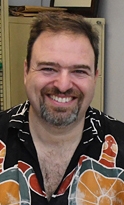
Wednesday, Oct. 3
Daniel Karp, assistant professor in the UC Davis Department of Fish, Wildlife, and Conservation Biology: "Harmonizing Biodiversity Conservation with Agricultural Production Across Working Landscapes"
Host: Jay Rosenheim, professor, UC Davis Department of Entomology and Nematology
Wednesday, Oct. 10
Alexander Raikhel, distinguished professor of entomology, UC Riverside: "The Role of Hormone Receptors and MicroRNAs in Mosquito Reproduction and Metabolism"
Host: Geoffrey Attardo
Wednesday, Oct. 17
Arnaud Martin, assistant professor of biology, George Washington University: "Do Butterflies Dream of Genetic Tattoos? Exploring the Genotype-Phenotype Map Using CRISPR"
Host: Geoffrey Attardo
Wednesday, Oct. 24
Naoki Yamanaka, assistant professor, UC Riverside: "A Membrane Transporter Is Required for Cellular Uptake of Ecdysone"
Host: Geoffrey Attardo
Wednesday, Oct. 31
Fred Wolf, assistant professor, UC Merced: (tentative title) "Drunken Drosophila and the Coding of Brain Plasticity"
Host: Joanna Chiu, associate professor and vice chair, UC Davis Department of Entomology and Nematology
Wednesday, Nov. 7
Lark Coffey, assistant professor in the Department of Pathology, Microbiology and Immunology, UC Davis School of Veterinary Medicine: "Zika Virus in Macaques, Mice and Mosquitoes: Contrasting Virulence and Transmissibility in Disparate Hosts"
Host: Geoffrey Attardo
Wednesday, Nov. 14
(No seminar; Entomological Society of America's annual meeting takes place from Nov. 11-14 in Vancouver, B.C.)
Wednesday, Nov. 21
(No seminar; Thanksgiving week)
Wednesday, Nov. 28
Robert Page, Provost emeritus of the University of Arizona and emeritus professor and chair of the UC Davis Department of Entomology and Nematology: "Reverse Engineering Social Structure in Honey Bees: a 25-Year Journey"
Host: Steve Nadler, professor and chair, UC Davis Department of Entomology and Nematology
Wednesday, Dec. 5
Cindy Preto, recent graduate (master's degree in entomology from UC Davis, Frank Zalom lab) "Behavior and Biology of the Three-Cornered Alfalfa Hopper in Vineyards."
Host: Frank Zalom, distinguished professor, UC Davis Department of Entomology and Nematology
For more information on the seminars, contact Attardo at gmattardo@ucdavis.edu.
